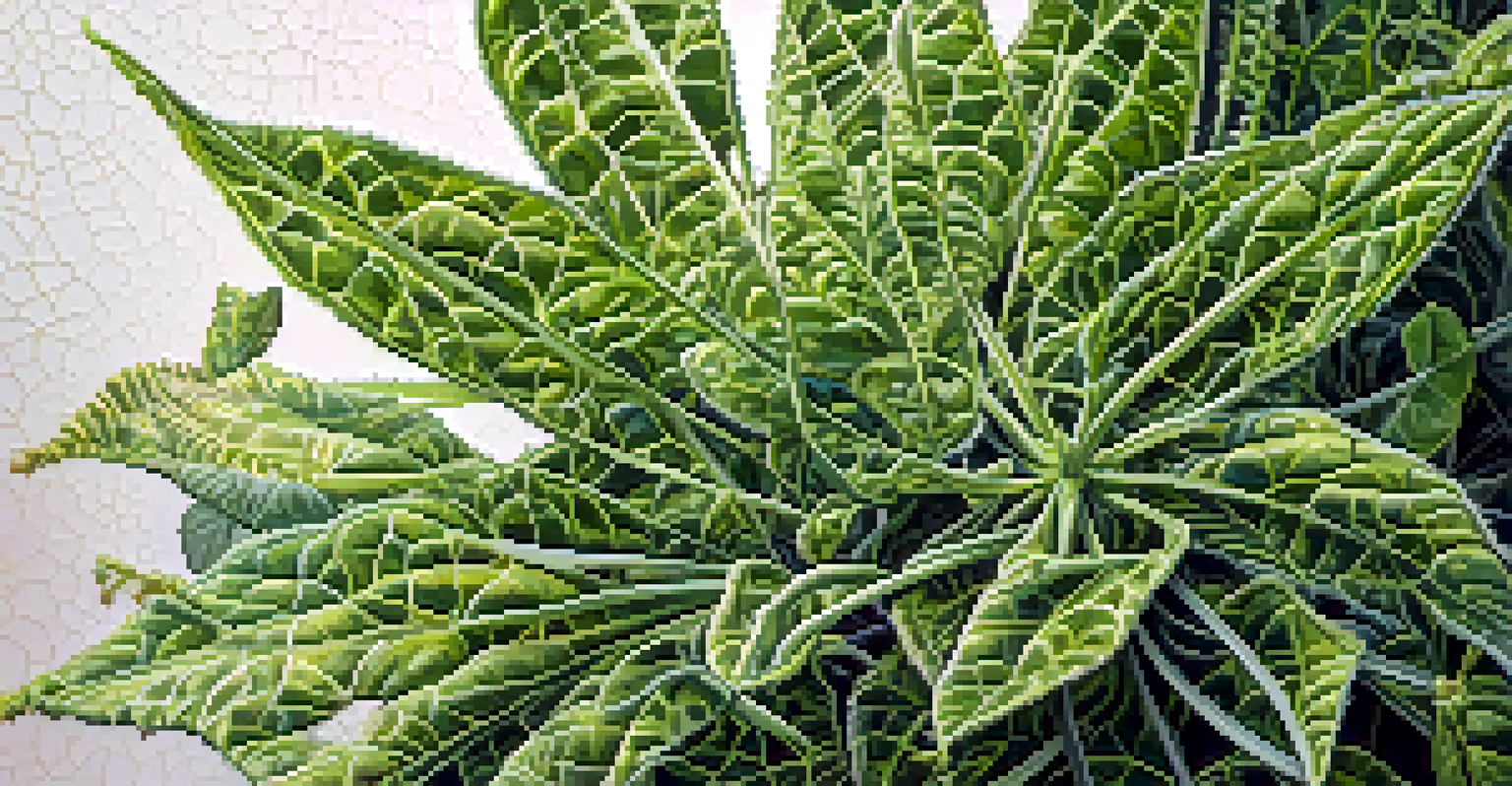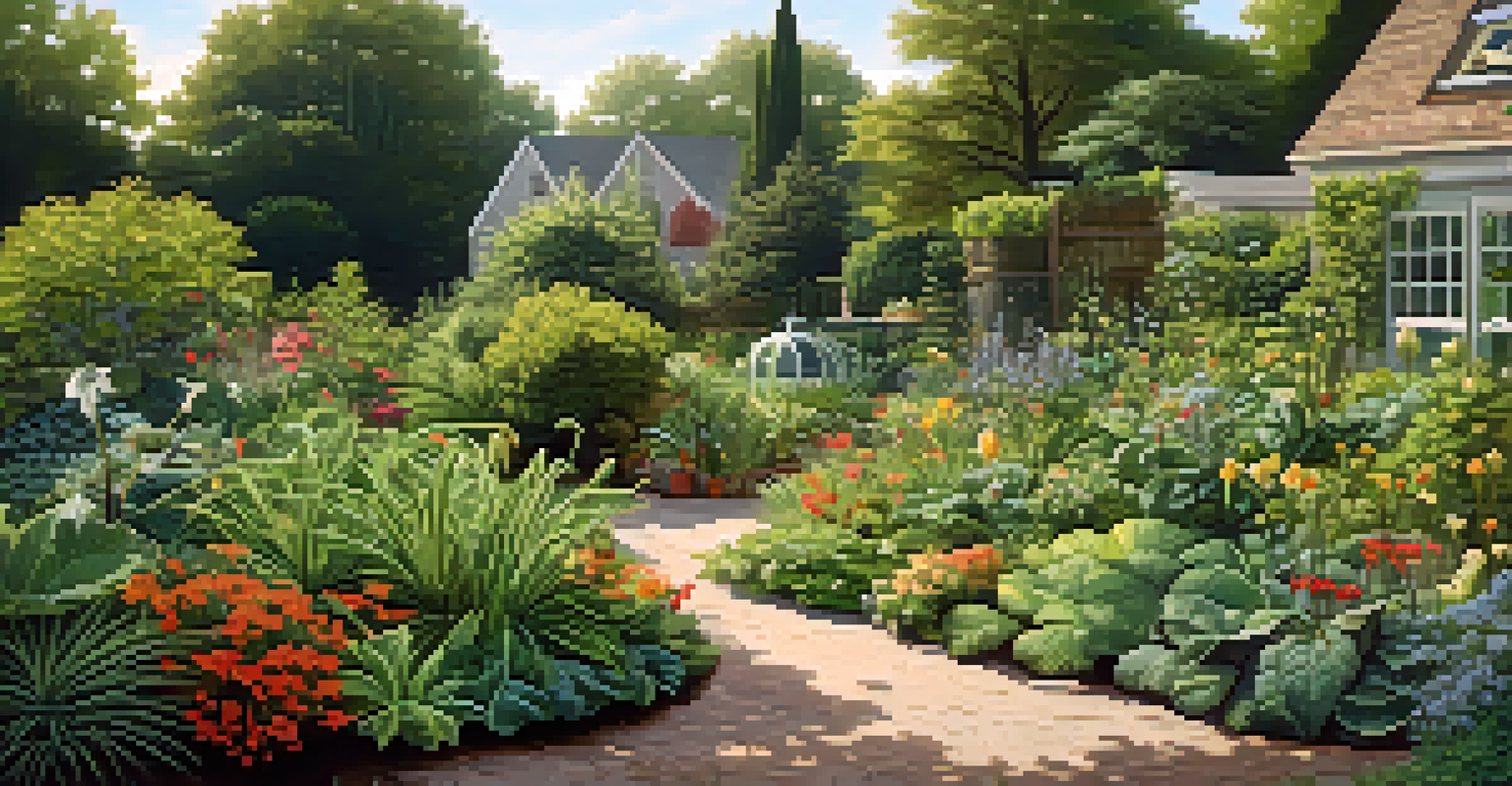Identifying Common Insect Pests That Harm Your Garden Plants

Recognizing Aphids: Tiny but Destructive Insect Pests
Aphids are small, soft-bodied insects that can quickly multiply on your garden plants. Often found on the undersides of leaves, these pests can cause significant damage by sucking the sap from plants. You'll notice signs such as curled leaves and a sticky residue known as honeydew, which can attract other pests.
The best fertiliser is the gardener's shadow.
Their rapid reproduction means a small infestation can turn into a full-blown crisis in no time. It's crucial to inspect your plants regularly, especially during the warm months when aphids are most active. If you spot them early, you can often control them with insecticidal soap or natural predators like ladybugs.
In addition to direct damage, aphids can also transmit plant viruses, further complicating your gardening efforts. Keeping your garden healthy with proper nutrition and watering can make plants less appealing to these pests. Remember, vigilance is key to managing aphids effectively.
The Menace of Spider Mites: Tiny Creatures with Big Impact
Spider mites are microscopic pests that can wreak havoc on your garden. Often mistaken for a dust or webbing on plants, they feed on the leaves, leading to a stippled appearance that can ultimately weaken your plants. Their favorite targets are typically roses, tomatoes, and beans.

One of the telltale signs of spider mites is the fine webbing they create, often seen in the corners of leaves or on the stems. You might also notice yellow or bronzed patches on the foliage. Regularly checking your plants, especially in hot, dry weather, can help you catch these pests before they cause severe damage.
Identify Common Garden Pests
Recognizing pests like aphids, spider mites, and whiteflies is crucial for timely intervention and protecting your plants.
Controlling spider mites can be tricky, but introducing beneficial insects like predatory mites or spraying with a strong jet of water can help keep their numbers in check. Additionally, maintaining adequate humidity levels in your garden can make it less hospitable for these pests. Stay vigilant and proactive to protect your plants.
Whiteflies: The Silent Garden Invaders
Whiteflies are small, winged pests that can be quite deceptive until it's too late. These pests often gather on the undersides of leaves, sucking the sap and weakening your plants. Their presence can be identified by a cloud of tiny white insects that fly up when the plant is disturbed.
To plant a garden is to believe in tomorrow.
As they feed, whiteflies excrete honeydew, which can lead to sooty mold growth on your plants. This not only affects the plant's appearance but can also hinder photosynthesis, further stunting growth. Regular monitoring is essential, especially in warm climates where whiteflies thrive.
To combat whiteflies, consider using yellow sticky traps to monitor their population or introducing natural predators like parasitic wasps. Insecticidal soap and neem oil can also be effective treatments. Keeping your garden clean and healthy will make it less inviting to these pesky invaders.
Caterpillars: The Garden's Uninvited Guests
Caterpillars can be charming in their own right, but they can also be a gardener's worst nightmare. These larvae of moths and butterflies can devour leaves at an alarming rate, leaving your plants looking ragged and unhealthy. They often blend into their surroundings, making them hard to spot until the damage is done.
Look for telltale signs like chewed leaves or frass (caterpillar droppings) on the ground. Different species of caterpillars can target various plants, so knowing the specific types in your area can help you take action promptly. Handpicking them off your plants is one of the simplest control methods.
Implement Effective Control Methods
Using natural predators, insecticidal soaps, and maintaining garden health are key strategies for managing pest populations.
If your garden is overrun, consider using organic pesticides that are safe for beneficial insects. Additionally, planting companion plants can confuse or deter these pests. By maintaining a diverse garden, you can create a more balanced ecosystem that naturally keeps caterpillar populations in check.
Identifying Slugs and Snails: Slow but Steady Destruction
Slugs and snails are notorious for their slimy trails and appetite for tender plants. These slow-moving pests thrive in damp conditions, making them a common problem in gardens after rain. They prefer to munch on young seedlings and leafy greens, often leaving behind large holes in the leaves.
To identify their presence, look for shiny trails on the soil or leaves, especially during the evening or early morning when they are most active. You may also find their eggs, which are small and transparent, hidden in damp areas. Regular inspections can help you catch them early before they cause significant damage.
Controlling slugs and snails can be a challenge, but there are various strategies to consider. Creating barriers with copper tape or using natural predators like birds can help reduce their numbers. Additionally, keeping your garden tidy and free of debris can eliminate their hiding spots, making it less appealing for them.
The Problem with Thrips: Tiny Pests, Big Trouble
Thrips are tiny, slender insects that can cause significant damage to your garden plants. They feed by puncturing plant cells and sucking out the contents, leading to stippled or discolored leaves. Their small size makes them hard to spot until the damage becomes evident.
One of the signs of a thrip infestation is silvering or discoloration on the leaves, along with black specks of their feces. These pests can also transmit plant viruses, compounding the issues they cause. Regularly inspecting your plants, particularly during flowering, can help you catch thrips early.
Practice Proactive Gardening
Regular inspections, crop rotation, and organic methods help create a resilient garden ecosystem less prone to pest infestations.
Controlling thrips involves a combination of monitoring and management strategies. You can use insecticidal soap or horticultural oils to help reduce their populations. Additionally, introducing beneficial insects like predatory thrips can help keep their numbers in check. Being proactive can save your garden from serious damage.
Preventing Insect Pests: Best Practices for Garden Health
Preventing insect pests in your garden requires a proactive approach focused on maintaining a healthy ecosystem. Start by planting a diverse range of plants that can attract beneficial insects and create a balanced environment. Healthy plants are less susceptible to pest infestations, so proper watering and fertilization are essential.
Regularly inspecting your plants for signs of pests and diseases can help catch issues before they escalate. Implementing crop rotation can also disrupt pest life cycles, making it harder for them to establish themselves. Additionally, keeping your garden clean and removing debris can eliminate potential hiding spots for pests.

Finally, consider using organic pest control methods to minimize harm to beneficial insects and the environment. Techniques like companion planting, introducing natural predators, and using barriers can effectively manage pest populations. By taking these steps, you can create a thriving garden that is resilient to insect pests.